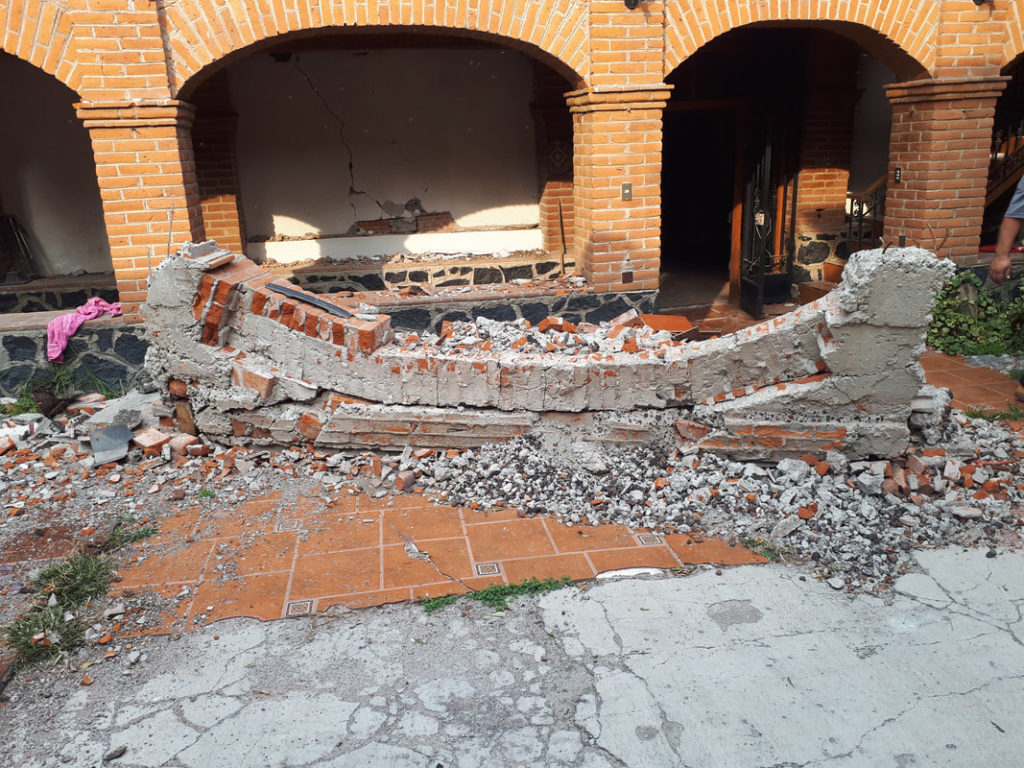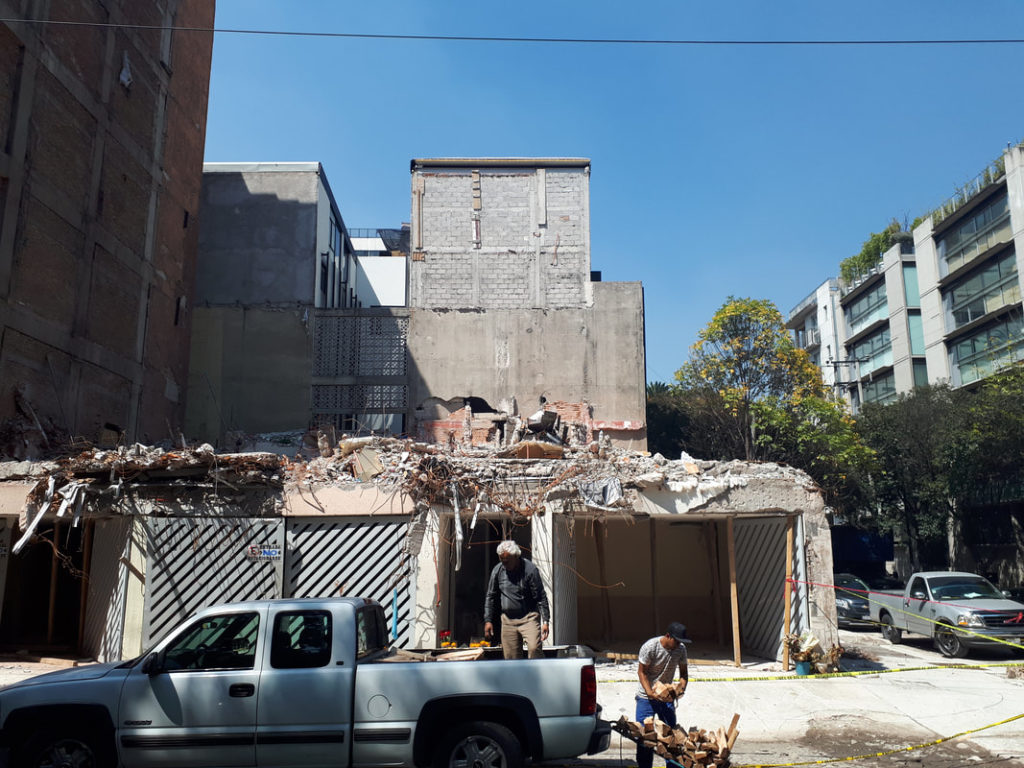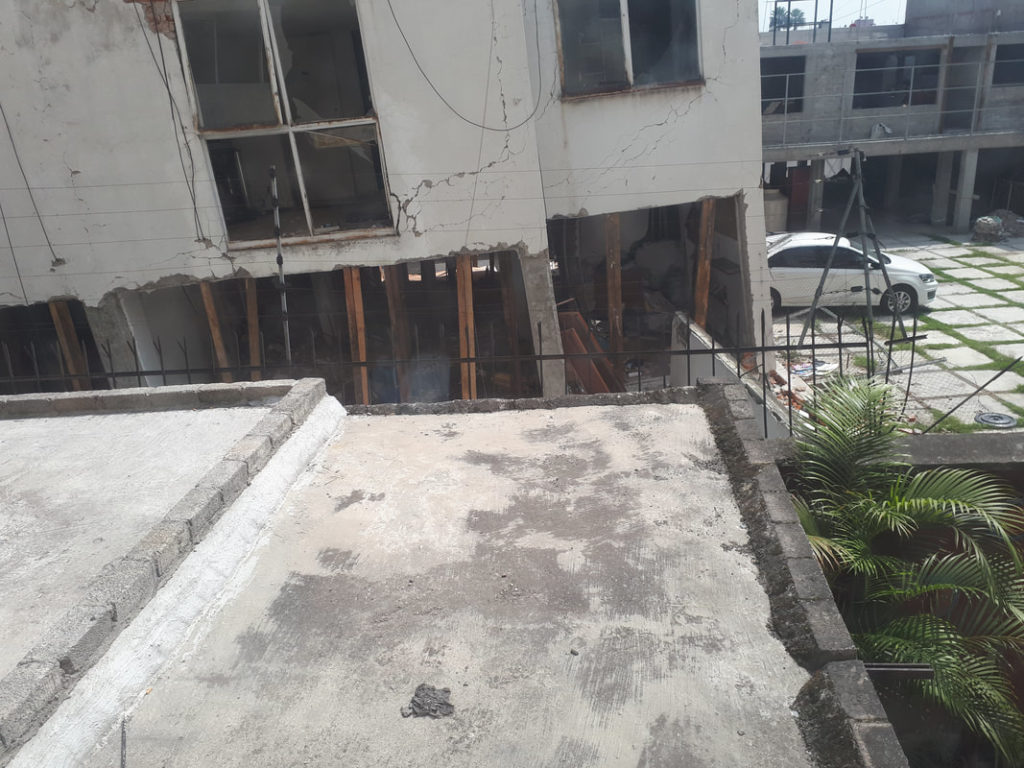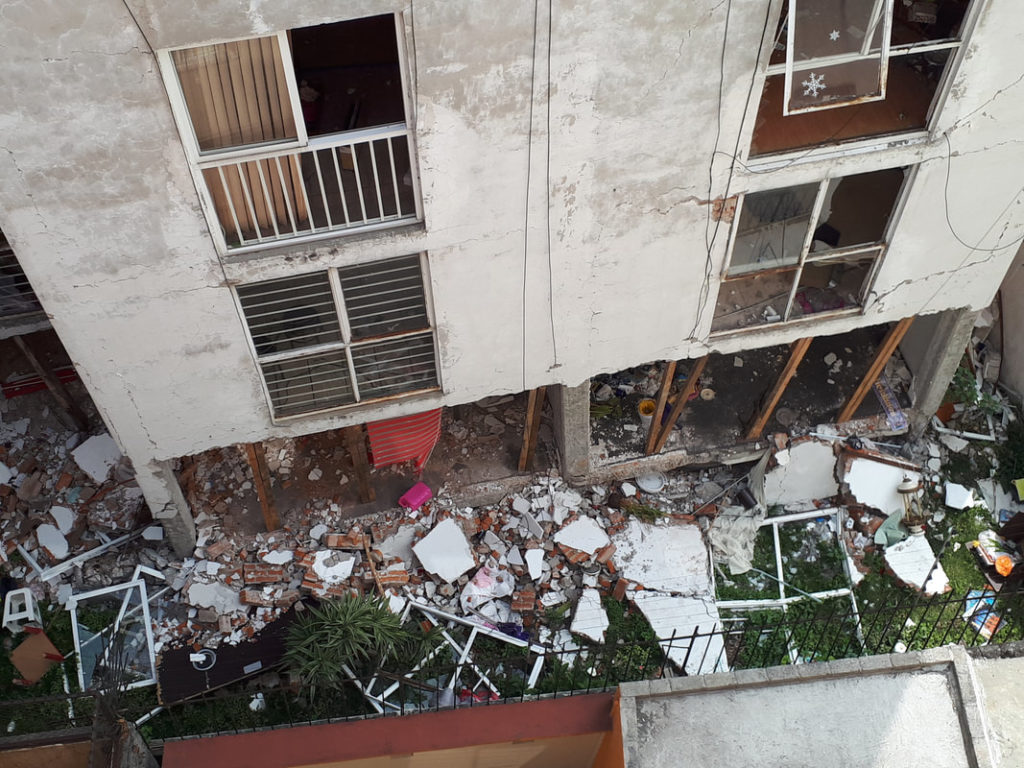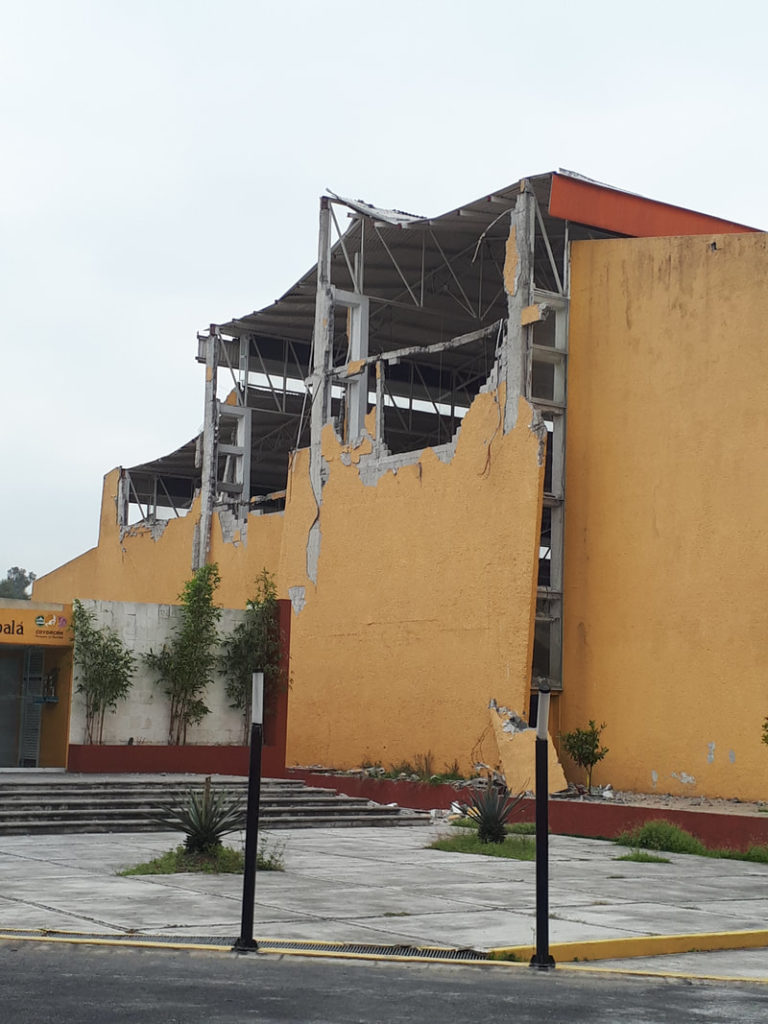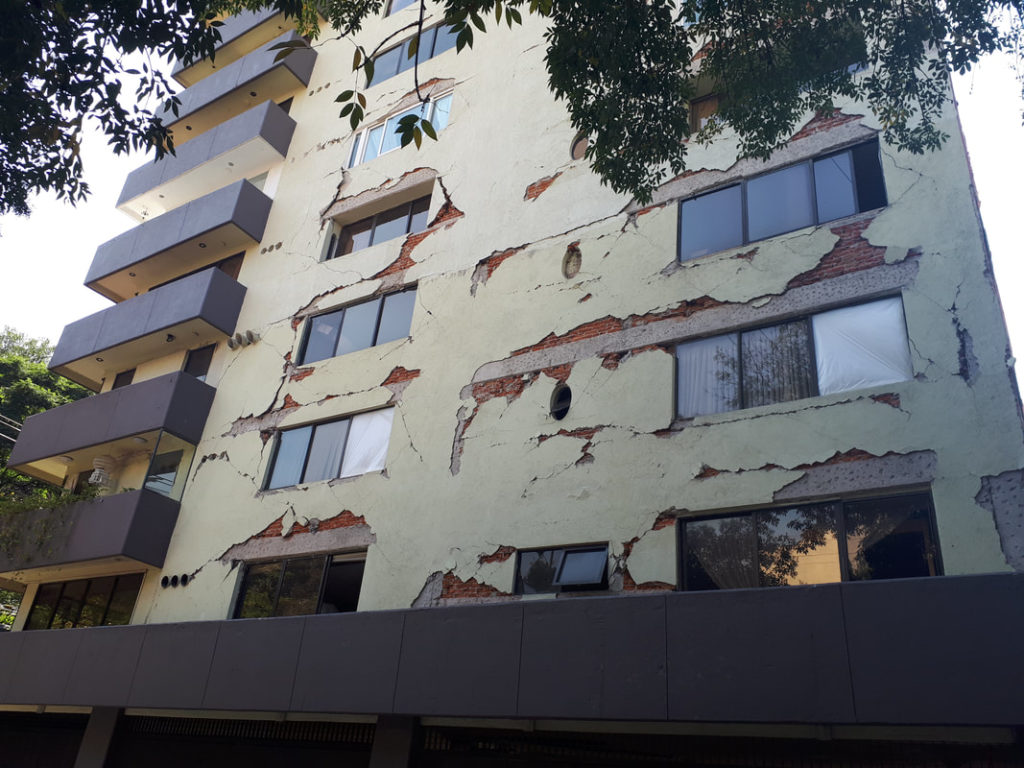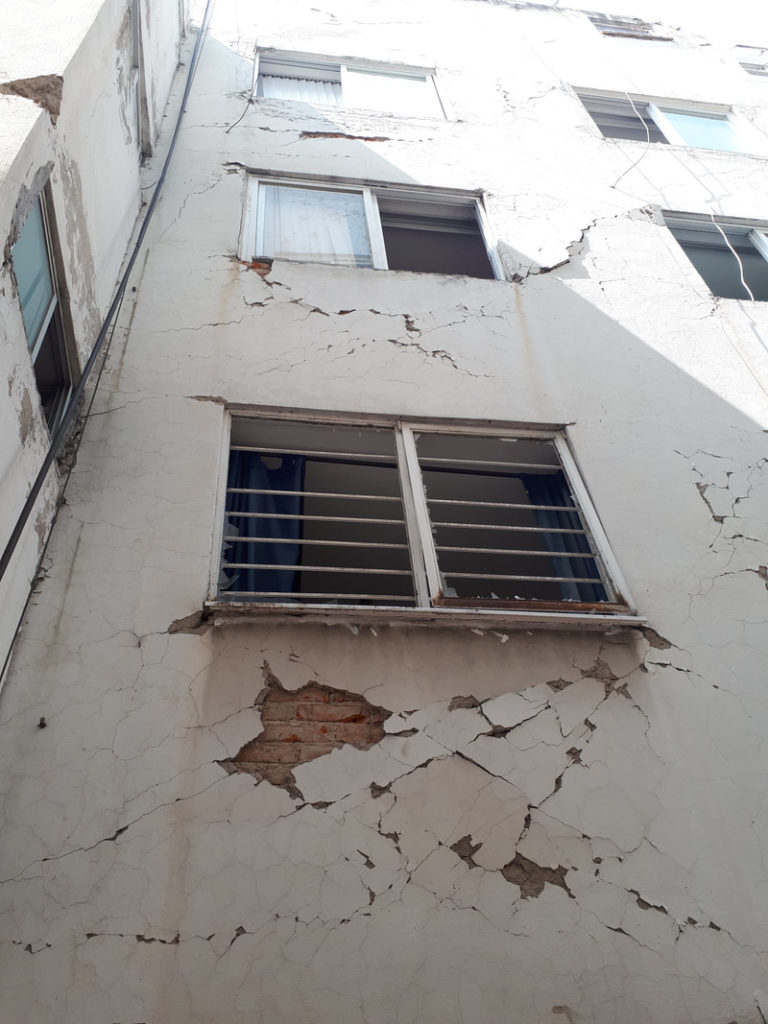17 – 23 October, 2017
On 19 September 2017, a 7.1 magnitude earthquake hit central Mexico, resulting in the collapse of over 40 buildings.
Shortly after a pair of earthquakes struck Mexico in the second half of 2017, the Canadian Association of Earthquake Engineering (CAEE) formed a team of academics, researchers, and practitioners to conduct an earthquake reconnaissance in the affected zones.
The group included one expert in bridge engineering (Sharlieh Huffman), reinforced concrete (Dr. Murat Saatcioglu), earthquake engineering and multi-hazard assessment (Dr. David Lau), and geotechnical engineering (Dr. Samuel Yniesta and Robert Lo). Dr. Cruz-Noguez was tapped to serve as the masonry specialist. One of the students of the Masonry Centre (Mr. Odín Guzmán) was also included in the survey team.
The findings from the survey were very interesting. Modern masonry in Mexico usually consists of “confined masonry” in which a concrete frame is poured around a wall section made of brick or concrete block.
Older construction, which lacked the frame or that had wide spaces between the columns of the frame, experienced the most damage. Buildings in which the walls at the first storey had been removed by the owners to create more parking space, or that had been absent from the beginning as a design feature, experienced the well-known “soft storey” failure mechanism, often catastrophic.
Newer buildings, however, performed very well. Side-by-side buildings showed that modern confined masonry is an effective technique to mitigate seismic damage.
